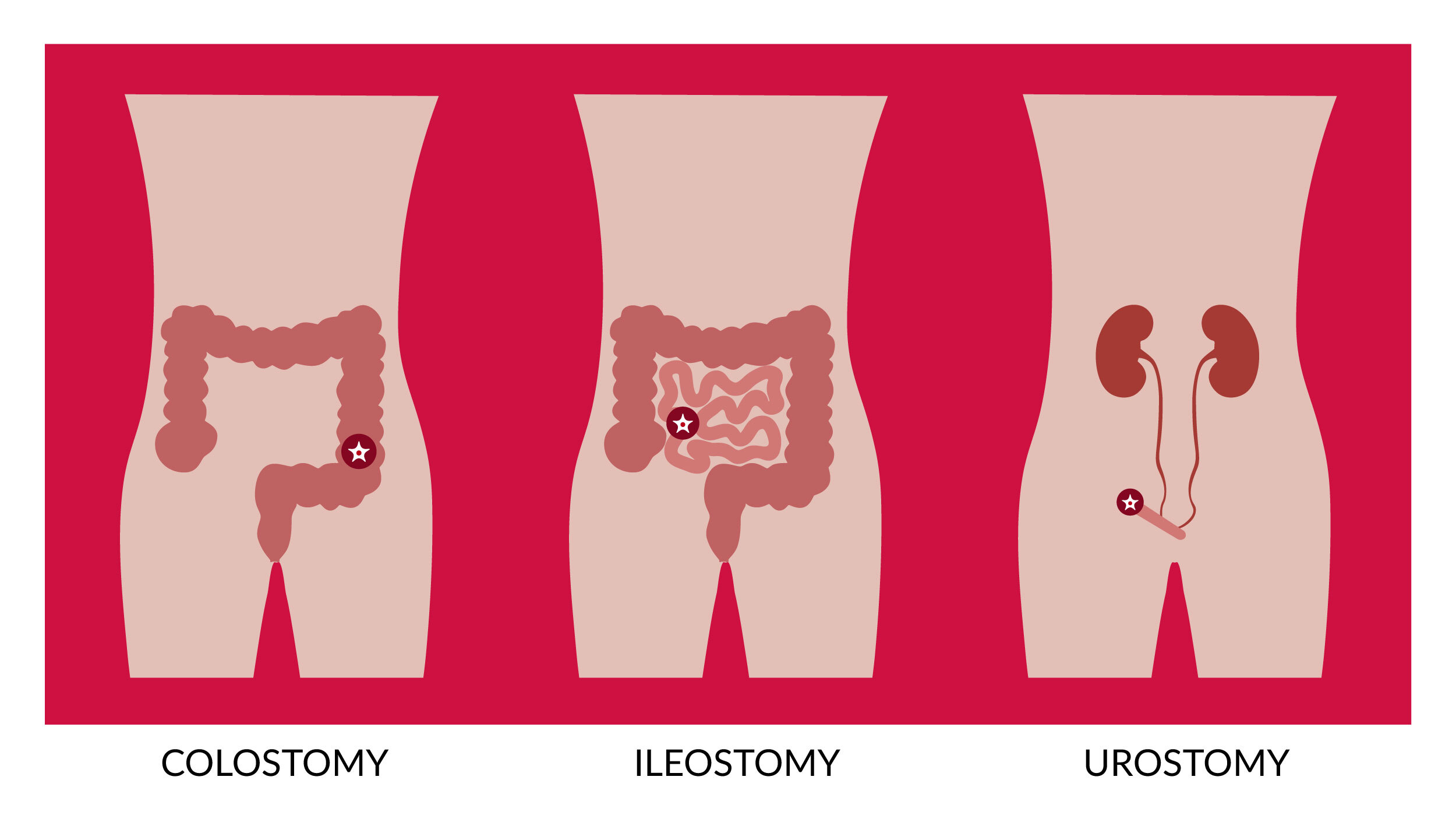If you’re unfamiliar with what a stoma is, then things can get a little confusing and you might think a colostomy covers everything. But really, there’s a world of difference between this and an ileostomy and a urostomy.
Whether you’re an ostomate or have friends or relatives with a stoma, this introduction is for you. We’re exploring how three of the most common stomas differ, giving you greater insight into when each may be used, how they work and the impact they have on an ostomate’s life.
What is a stoma?
Before we get into specifics, it’s worth talking about what a stoma is exactly.
Coming from the Greek word for ‘opening into or out of the body’. A stoma is an opening in the abdomen that can be connected to either the digestive or urinary system to allow waste to leave the body. Colostomy, ileostomy and urostomy are all different types of stoma.
is a surgically-created opening that helps the body pass waste. The surgeon will create the stoma using part of the intestine (for a colostomy or ileostomy) or the urinary tract (for a urostomy). Waste can pass through this opening and into a bag (which can be removed and cleaned as necessary) attached to the stomach.
Stomas can be temporary or permanent, and may be needed for several reasons. These include birth defects, cancer, inflammatory bowel disease, diverticulitis, incontinence, and a range of other conditions such as Crohn’s or Colitis. A stoma can also be needed in the case of severe abdominal or pelvic trauma caused by accidents or injuries.

What is a colostomy?
A colostomy is a surgically created opening in the abdominal wall through which the large bowel is pulled. A small part of the colon or large bowel is moved through to the abdominal wall and then sutured to the skin, where a stoma bag collects output from the colon.
A colostomy is common in neuropathic conditions like spina bifida. This is because a neuropathic bowel often can’t pick up on messages sent from the brain to the anal sphincter due to damage in the spinal cord.
Bowel cancer is another common reason for having a colostomy.
What does a colostomy look like?
Colostomy stomas look red and moist. They’re usually located on the left side of the abdomen, but for the most part, the location depends on how much of the colon is being removed.
What does a colostomy do?
A colostomy diverts output away from the rectum or anus. Because it’s designed to mimic those who have a functioning rectum and anus, the output is generally firm
The more colon there is, the more time the output has to collect in the colon. The less colon there is, the amount of output and the frequency will be like that of an ileostomy, which brings us to…
What is an ileostomy?
An ileostomy is a surgically-created opening, pulling the lowest part of the small intestine (or ileum). This is then brought through the abdominal wall, turned inside out (a process known as everting) to form a spout that is stitched to the skin.
This procedure is often performed for people experiencing Crohn’s Disease, Colitis, or certain forms of irritable bowel disease.
What does an ileostomy look like?
An ileostomy often looks look red and moist. They are usually located on the lower right-hand side of the abdomen.
What does an ileostomy do?
An ileostomy diverts output from the small intestine before it reaches the rectum and anus, so it can leave through the stoma. Much like how the amount of remaining colon affects the output from a colostomy, the amount of small intestine (as well as diet) affects the consistency of the output, which is typically more like a liquid, or a smooth paste.
The digestive enzymes found in this output make it highly corrosive, so protecting the skin around the stoma (known as peristomal skin) is essential.
What is a urostomy?
A urostomy involves diverting the ureters, the two small tubes that drain output from the kidneys to the bladder, onto the surface of the abdomen. Since these tubes are so small, they are often transplanted into a small piece of bowel, forming the stoma.
There are a few different varieties of urostomy. The most common, the ileal conduit, involves removing a short segment of the ileum, which is then used to create a pipeline for urine to flow from the body.
A colonic conduit is less common. Rather than using the ileum, the large intestine is used for the pipeline instead.
A urostomy is a permanent stoma for the most part.
What does a urostomy look like?
The stoma from a urostomy is red and moist. Like the two stomas above, the stoma features no nerve endings and so the ostomate feels no sensation when their urine is diverted.
What does a urostomy do?
A urostomy allows waste to flow out of the body after the bladder has been removed or bypassed. Since a part of the small bowel is used to form the stoma, the output that leaves the body may contain mucus.